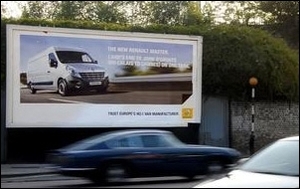Clear Channel UK Boss Predicts More Mobile-Outdoor Tie-Ups
- by Erik Sass @eriksass1, January 8, 2015
 The “Minority Report” comparisons may be a bit exaggerated, but at least part of that sci-fi vision is already coming to pass with the advent of addressable
out-of-home advertising, with ads delivered to digital displays based on information collected from mobile devices.
The “Minority Report” comparisons may be a bit exaggerated, but at least part of that sci-fi vision is already coming to pass with the advent of addressable
out-of-home advertising, with ads delivered to digital displays based on information collected from mobile devices. British consumers will probably be seeing a lot more of this in the near future, according to Andrew Morley, CEO of Clear Channel UK, who predicted in an interview with The Telegraph this week that interactive out-of-home ads on bus shelters would soon supplant traditional roadside billboards.
“Outdoor advertising is becoming interactive, linked to mobile phones and delivered by digital technology. That’s where the industry is moving,” Morley told the Telegraph. He noted that Clear Channel UK has already installed 40 digital billboards and 100 smaller interactive digital screens connected to bus shelters throughout London, taking advantage of ubiquitous smartphones to display ads to commuters and passers-by based on anonymous data.
advertisement
advertisement
The bus shelters form an ad network called Adshel Live; Morley revealed “we will be rolling out the Adshel Live digital program to hundreds of locations” over the next year.
In 2013, Clear Channel UK unveiled its “Storm” network of high-profile digital billboards along motorways around London, which allow “bespoke” ad placements, with creative formats and schedules. For example, a campaign for British Airways used surveillance technology and flight schedules to determine when there is a BA plane overhead, then displayed a message linked to the plane.
The announcement comes as Clear Channel is said to be considering a sale of its UK division for as much as $3 billion.
Clear Channel UK isn’t the only outdoor advertiser integrating mobile and out-of-home advertising.
In 2013, Posterscope’s U.K. operation signed a deal for mobile network usage data from EE (Everything Everywhere), the largest mobile network operator in Britain. The Posterscope-EE deal includes anonymized data on consumer movements and location-based digital behaviors, including how, when, and where mobile devices are used in relation to outdoor media, and what mobile Web sites and mobile apps people visit on their smartphones.


